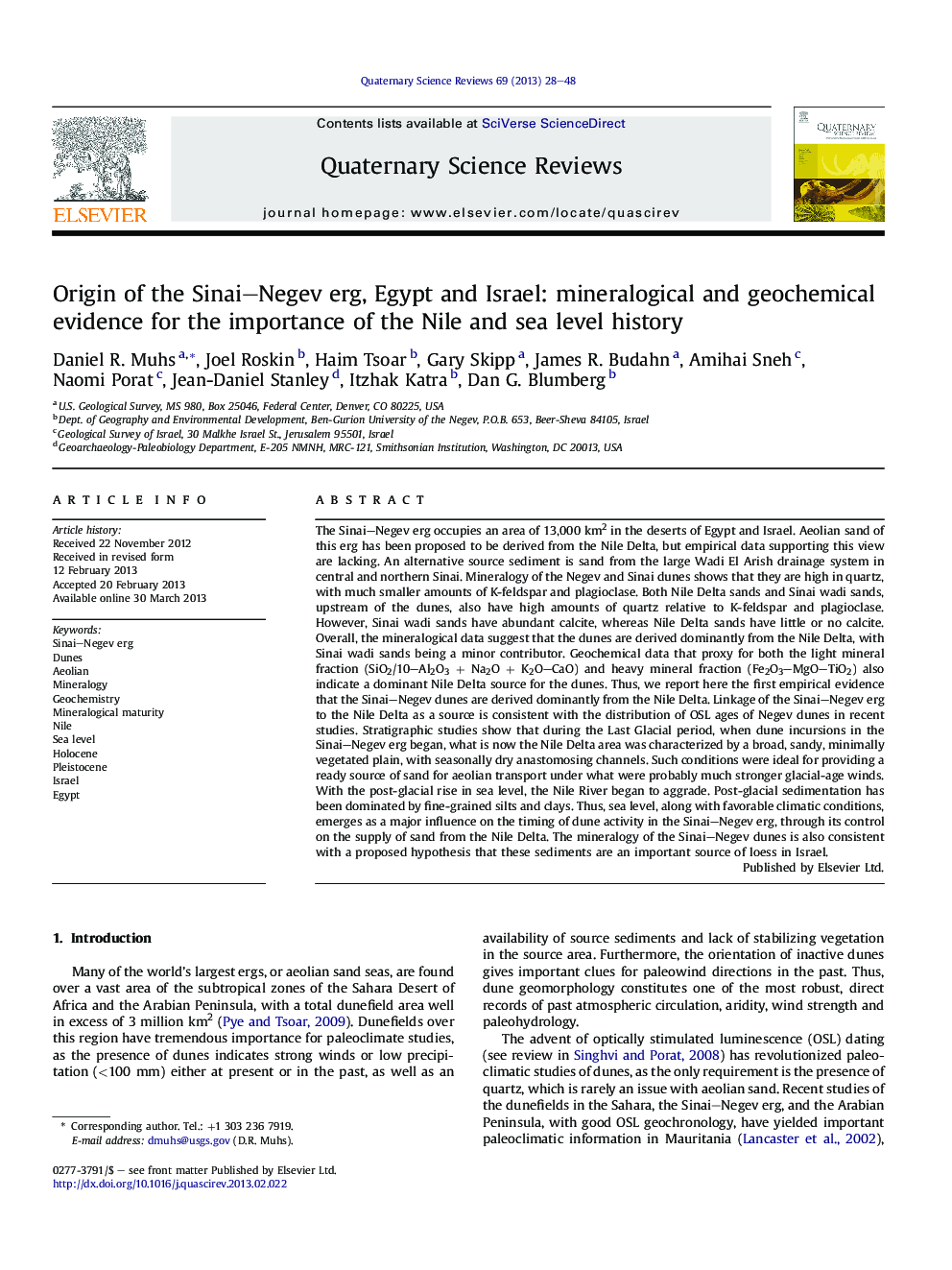| کد مقاله | کد نشریه | سال انتشار | مقاله انگلیسی | نسخه تمام متن |
|---|---|---|---|---|
| 4736329 | 1640865 | 2013 | 21 صفحه PDF | دانلود رایگان |
The Sinai–Negev erg occupies an area of 13,000 km2 in the deserts of Egypt and Israel. Aeolian sand of this erg has been proposed to be derived from the Nile Delta, but empirical data supporting this view are lacking. An alternative source sediment is sand from the large Wadi El Arish drainage system in central and northern Sinai. Mineralogy of the Negev and Sinai dunes shows that they are high in quartz, with much smaller amounts of K-feldspar and plagioclase. Both Nile Delta sands and Sinai wadi sands, upstream of the dunes, also have high amounts of quartz relative to K-feldspar and plagioclase. However, Sinai wadi sands have abundant calcite, whereas Nile Delta sands have little or no calcite. Overall, the mineralogical data suggest that the dunes are derived dominantly from the Nile Delta, with Sinai wadi sands being a minor contributor. Geochemical data that proxy for both the light mineral fraction (SiO2/10–Al2O3 + Na2O + K2O–CaO) and heavy mineral fraction (Fe2O3–MgO–TiO2) also indicate a dominant Nile Delta source for the dunes. Thus, we report here the first empirical evidence that the Sinai–Negev dunes are derived dominantly from the Nile Delta. Linkage of the Sinai–Negev erg to the Nile Delta as a source is consistent with the distribution of OSL ages of Negev dunes in recent studies. Stratigraphic studies show that during the Last Glacial period, when dune incursions in the Sinai–Negev erg began, what is now the Nile Delta area was characterized by a broad, sandy, minimally vegetated plain, with seasonally dry anastomosing channels. Such conditions were ideal for providing a ready source of sand for aeolian transport under what were probably much stronger glacial-age winds. With the post-glacial rise in sea level, the Nile River began to aggrade. Post-glacial sedimentation has been dominated by fine-grained silts and clays. Thus, sea level, along with favorable climatic conditions, emerges as a major influence on the timing of dune activity in the Sinai–Negev erg, through its control on the supply of sand from the Nile Delta. The mineralogy of the Sinai–Negev dunes is also consistent with a proposed hypothesis that these sediments are an important source of loess in Israel.
► The primary source of sand in the Sinai–Negev erg is the Nile Delta.
► Sea level is important through its role as a control on base level for the Nile.
► Mineralogy shows that the Sinai–Negev erg could be a source of loess in Israel.
Journal: Quaternary Science Reviews - Volume 69, 1 June 2013, Pages 28–48
